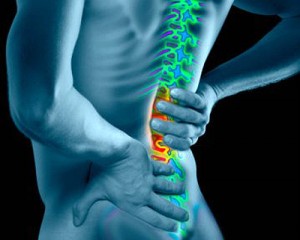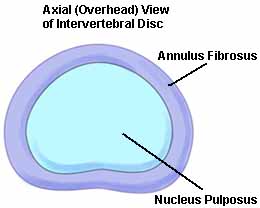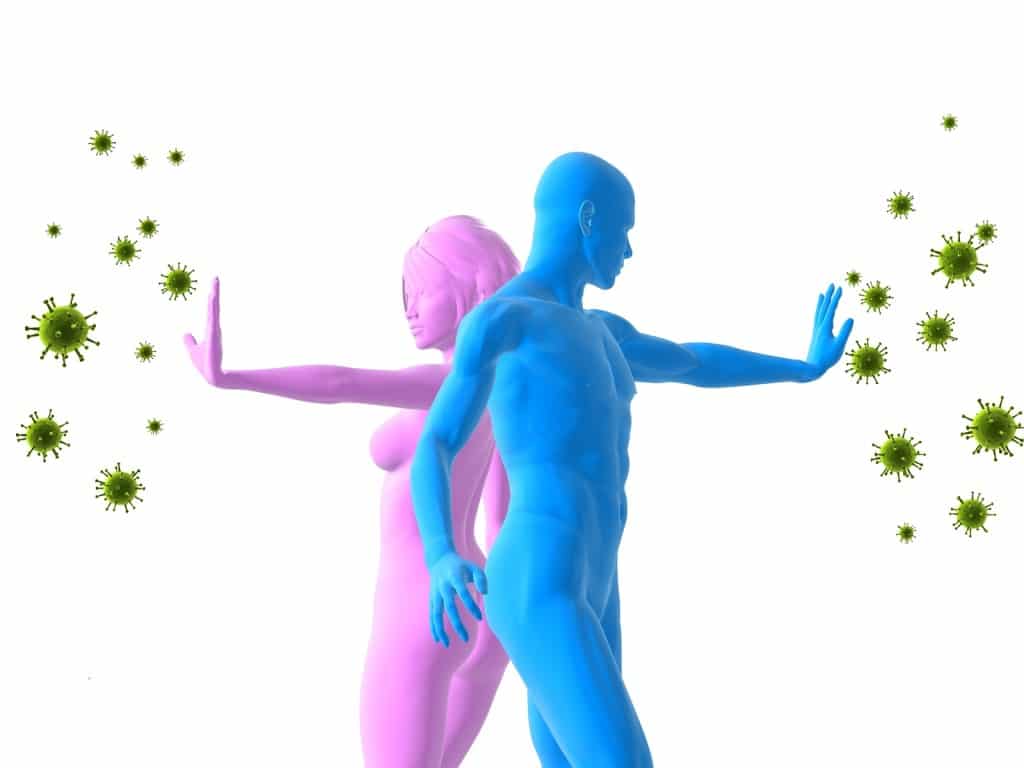 Low back can often manifest a debilitating situation in someone’s life. Structurally, your lower back (lumbar spine) supports most of the weight of your body and is subjected to the most mechanical stress. This is specifically why it’s often this local area that radiates problems and pain from overuse, misuse, and misalignment in an individual’s day-to-day life.
Low back can often manifest a debilitating situation in someone’s life. Structurally, your lower back (lumbar spine) supports most of the weight of your body and is subjected to the most mechanical stress. This is specifically why it’s often this local area that radiates problems and pain from overuse, misuse, and misalignment in an individual’s day-to-day life.
Typically with our allopathic tendencies in thinking, when low back pain erupts in our life, we inherently go after addressing the “symptoms” of the back pain, and not addressing the underlying root cause.
The skeletal structure of the human spinal column is one of the most intricately designed edifices in all of nature. This architectural design does not convey pain and discomfort without intelligent design. The integrity of this design is specifically dependent upon the cooperation of the structures that allow flexibility and movement throughout the bony vertebrae of the spine. These structures are the known as the intervertebral discs, which are fibrocartilaginous cushions that serve as the spine’s shock absorbing system which protect the vertebrae, the brain, and the nerves.
These discs allow vertebral motion, and the magnitude of that motion is dependent upon the systemic collaboration of the intervertebral disc throughout the spinal architecture.
It is in this understanding of what contributes to the integrity and suppleness of these intervertebral discs that determines the long-term health and vitality of the spine, and whether or not you will be susceptible to repeated attacks of lower back pain, sciatic pain, and debilitation associated with the malfunctioning of your spinal column (which is under systematic influence). There is not a function in your body that is not determinant upon the interaction of the nervous system, whose pathway is interlaced throughout the intelligent spinal architecture.
The fundamental question to ask yourself here is “What actually makes these critical intervertebral disks of mine up? What makes them supple and healthy, and allows for the most freedom in movement and motion?”
The answer at the root of this question is the solution to avoiding all symptoms of acute and chronic back pain. Understanding the terminology, functioning, and relationship of your spine and spinal problems is critical to incite the inherent solutions that are available. It is in being empowered and informed that gives you access to solutions. And this being so, here is a valuable summation of the structure, unsuspecting cause, and consequential solution to problems associated with the spine.
The intervertebral discs are comprised of a nucleus pulposus, which is the gel-like core of the disk, and the annulus fibrosis, which is a strong tire-like connective tissue ring that holds the nucleus in place. Both the nucleus pulposus and the annulus fibrosus are mainly comprised of collagen, proteoglycans, and the most crucial substance of all, water.
In particular, the nucleus pulposus must optimally contain a well hydrated gel that resists compression. This hydration is determinant upon the availability of pure, clean water that is drawn into the nucleus by its biochemical constituents through osmosis and diffusion. The key here is that the body system must be supplied with the sufficient amount of water to keep the intervertebral discs hydrated. The amount of water in the nucleus pulposus varies throughout the day for everyone, depending upon levels of activity.
Most people naively look to a prescription of an isolated macromolecule, or a manipulation of the vertebrae and discs, when the problem at the root of it all is a deficiency in what actually makes up the majority of the structural integrity of the spinal column in the first place, which is vitalizing water.
Now this may be difficult to grasp for many people who have neurologically associated water as just a mundane and inert substance. But this is the precise mistake that leads so many people to undergo acute to chronic day-to-day problems due to lacking the very substance that is the driver, carrier, and sustainer of life within everyone of the trillions of cells in their body.
When you become dehydrated, you very quickly begin to lose cellular and systemic function throughout your body. The only trouble is that most people are completely out of connection with their body’s request for water… and they often think that they are “too smart” to miss the physiological signals when they are expressed, of course until a significant problem shows up.
Did you know that actual “dry mouth” or feeling thirsty is one of the worst ways to indicate that you are dehydrated? These are some of your body’s last warning signs that there is a deficiency of this life-giving substance in your system.
When your cells and organs are dehydrated, and you will be experiencing the “lighter” side-effects of dehydration first, which are low energy, lack of focus, and increased levels of stress. These typical symptoms are coped with day-to-day until a more serious condition is experienced, which was actually based on your bodies continuous demand for optimal hydration.
As soon as your body starts to become dehydrated, it immediately begins to draw water and nutrients from areas in your body that are deemed “less critical” at the time to aid in processes that are necessary to keep you alive first and foremost. Specifically, in this case, it is important to take a look at the functionality of your blood.
Your blood is often referred to as The River of Life, it’s most notably your bodies highly sophisticated transportation system, and the very foundation of every blood cell in your body is water. Now, because your intervertebral discs are considered to be nonvascular, this is one of the last places that receives the benefits of proper hydration, and one of the first places to become deficient. This intrinsically reveals the unsuspecting hidden culprit behind low back pain, as well as numerous other chronic conditions, and also reveals a critical solution for the intelligent practitioner and the adept benefactor.
A fundamental place to begin to intelligently hydrate your system is to take your body weight and divide it in half, and the number that you come up with is the number of ounces of fresh, clean water that you need to consume everyday. That means that if you are 160 lbs., you need to unsure that you are drinking at least 80 ounces of pure water each day.
Most back pain is actually an ending process of simple muscle strains. But again, this is the ending process in a chain of events that initiates with cellular dehydration, as well deficiencies throughout the spinal and synovial fluid, that results in the imbalances where muscles are required to compensate and maintain outermost structural integrity.
It is not just important, but essential to super-hydrate your system to avoid and remedy the problems associated with back pain. Understand that this is not a deficiency that has happened overnight, so it is a practice that takes time and attention to provide your body with the right conditions to heal.
There are numerous complimentary practices that can accelerate healing and remobilization associated with chronic and acute back pain. Optional integrative practices ranging from chiropractic treatment, acupuncture, inversion therapy, nutrition counseling to balance out deficiencies and remove toxins, rebounding, strategic muscular stretching, flexibility training, and many others. The key factor is ensuring that you are choosing a knowledgeable practitioner and/ or advisor to work with you. It is your health that is the focus, so always go with the best resources available.
For more information on back pain relief, and integrative practices to improve acute and chronic back conditions visit www.themodelhealthshow.com
Shawn Stevenson is a Professional Nutritionist specializing in kinesiological science, as well as advanced treatment for acute and chronic disorders. He is the author of several books including The Key to Quantum Health and The Fat Loss Code.








Hi there, I have been watching a lot of Shawn’s interview as I have a similar spine problem as he has and I really want to find out what exactly he did and what he changed in order to heal. Please leave a comment with any info that might help. Thanks!!!!!!
Hey Peter! This the resident nutritionist here, Craig (: Here is an episode Shawn did wayyyy back in the day talkibg about his back problems and how he helped himself! Give it a listen!
https://themodelhealthshow.com/treating-back-pain/
Hey Shawn! I’ve been battling 2 herniated discs since I was sixteen- I’m twenty now, and although have significantly less pain, can still get spouts of it all over again in certain situations- any suggestions on how to fully heal this issue? (Sidenote: my brother also fractured a vertebrae 3 years ago when he was 19, and is still having significant pain from it- If ou have any suggestions for him either, that would also be appreciated!)
-Rachel
Hey,
I have a 9 yr old son with a tendon issue, and looking for an alternative to ibuprofen. I recall you mentioning a natural substitute for ibuprofen but cannot for the life of me find it again in your podcasts. Any info would be greatly appreciated He is currently going to physical therapy.
Kind regards
Jason
Hey Jason! Thank you for reaching out to us.
This is Shawn’s nutritional assistant, Craig.
There are several things you can incorporate to help with healing tendons and ligaments, while reducing pain. While I’m not sure exactly what you were thinking of when Shawn recommended a natural painkiller alternative, I have a few suggestions that may help.
1.) Consume a lot of collagen- collagen found in bone broth or supplement form is a great way to heal the tendons and ligaments. Bone broth especially is high in condroiten, glucosamine, and hyaluronic acid, which are all compounds that help with tendon, ligament, and joint repair. Anyone that has consumed bone broth and/or collagen will tell you that their skin, hair, nails, and joints have felt remarkably better.
2.) Fish oil/krill oil – high in omega 3 fatty acids are a great anti-inflammatory which will balance the omega 6-3 ratio. This can help pain and alleviate the inflammation to the damaged tissue.
3.) Try earthing/grounding – just touching bare feet or any skin to the earth’s surface will cause a better balance of positive and negative ions which can reduce inflammation and pain. Just give a quick google search of “blood thinning effects of grounding”. It really helps!
4.) Cryotherapy/cold immersion – This can really help to reduce pain and swelling
5.) Curcumin/turmeric – very, very powerful anti-inflammatories and natural pain killers. Things like boswellia and ginger can also really help as well.
6.) topical magnesium oil – magnesium is a mineral that is responsible for over 325 biochemical processes within the body. Rubbing EASE magnesium on there a few times a day can help to soothe, relax, and heal the inflamed areas.
7.) Eat sulfur rich foods/MSM supplement – MSM (methylsulfylmethane) is a compound that can really do wonders with helping build new tissue, especially with addition of vitamin C from citrus fruits.
Together adding these into your son’s daily regimen may provide benefit to his tendon!
i hope this helps Jason (: